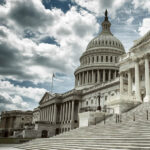On September 25, 2025, the U.S. Court of Appeals for the Federal Circuit (Federal Circuit) upheld Lists 3 and 4A of Section 301 tariffs on Chinese products. Should the Federal Circuit’s decision become final and conclusive, parties that challenged the Section 301 tariffs will not be entitled to refunds of duties paid under Lists 3 and 4A.
These tariffs are the subject of an unprecedented level of litigation commenced in September 2020 by over 6,000 importers in approximately 3,500 lawsuits brought before the U.S. Court of International Trade (CIT). The CIT collected the cases into one master case to serve as the sample case for purposes of its consideration and resolution of all plaintiffs’ claims.
The tariffs at issue were imposed under Section 301 of the Trade Act of 1974 by the Office of the United States Trade Representative (USTR) during the first Trump administration. The tariffs were the result of an investigation initiated in August 2017 into whether China’s trade practices were unreasonable or discriminatory and burdened or restricted U.S. commerce. USTR initially imposed tariffs at a 25% rate on two lists of Chinese goods worth $50 billion – these List 1 and 2 tariffs are not subject to the litigation. Subsequently, USTR modified the Section 301 tariffs at the direction of the President by imposing additional tariffs on at least $300 billion worth of Chinese imports – these List 3 and 4A tariffs are the subject of the Federal Circuit’s decision. The List 3 tariffs were initially imposed at a 10% rate, which subsequently increased to 25%, and the List 4A tariffs were initially imposed at a 15% rate, which subsequently decreased to 7.5%.
Statutory Interpretation and USTR’s Authority
The Federal Circuit began by interpreting the statutory text to determine whether USTR had the authority to “modify” the Section 301 tariffs when it issued Lists 3 and 4A. Ultimately, the Federal Circuit upheld the tariffs under Section 307(a)(1)(C), under which USTR may “modify or terminate any action” being taken under Section 301 when such action is “no longer appropriate.” In construing the statute, the Federal Circuit disagreed with importers that “modify” has an implied upward limit and that the term does not permit a change as large as that made by Lists 3 and 4A. Rather, the Federal Circuit observed that the term “modify” is “indifferent to degrees of change and contains no inherent limitations,” and that it is “indifferent to the direction of change and encompasses both escalations and de-escalations in trade actions.” Thus, USTR’s authority to modify Section 301 tariffs is not limited to reducing or terminating the tariffs and it is not restricted to making only minor modifications.
The Federal Circuit then analyzed the phrase “no longer appropriate,” and agreed with the Government’s broader view that the modification authority includes situations where increased action is appropriate because the prior action taken was insufficient to its stated purpose. Thus, USTR is permitted to increase tariffs under Section 307(a)(1)(C) because the prior action/tariffs were insufficient, and thus, “no longer appropriate.” And even though in the five prior instances in which USTR invoked Section 307(a)(1)(C) it only did so to reduce or terminate the tariffs, the Federal Circuit found that such prior actions are insufficient to impose a limit that is not expressly required by the statute’s text.
Constitutional Considerations
The Federal Circuit also considered whether Section 307(a)(1)(C) violates the Constitution. The Court observed that where non-delegation concerns are raised, the relevant question is whether Congress has supplied an “intelligible principle” to guide the delegee’s use of discretion. It found that Section 307(a)(1)(C) plainly provides an intelligible principle for USTR’s authority to modify a discretionary action because it authorizes only those actions that would have been permissible in the first instance under Section 301(b) – in particular, those actions appropriate to obtain the elimination of the foreign practices found to be unfair after USTR’s full investigation.
It also rejected the argument that USTR’s modifications implicate the major questions doctrine, which prevents agencies from claiming “[e]xtraordinary grants of regulatory authority” based on “vague” or “modest words” where they may be “reason to hesitate before concluding that Congress meant to confer such authority.” It distinguished several cases where the major questions doctrine was implicated, including its recent decision in V.O.S. Selections, which concerns the legal authority to impose tariffs under the International Emergency Economic Powers Act (IEEPA). In V.O.S. Selections, the Federal Circuit found that the IEEPA tariffs at issue were “unheralded” and “transformative,” the government had never previously claimed powers of the magnitude claimed under IEEPA, the “basic and consequential tradeoffs” inherent in the President’s decision to impose the IEEPA tariffs were “ones that Congress would likely have intended for itself,” and there was “no clear congressional authorization by IEEPA for tariffs of the magnitude” of those implemented. Conversely, Federal Circuit found that the Lists 3 and 4A tariffs do not involve a transformation of USTR’s regulatory authority, and at best, may be a new use of its regulatory authority.
Administrative Protective Act (APA) Requirements
The Federal Circuit dismissed arguments that USTR violated the APA’s rulemaking requirements by failing to consider and adequately respond to significant public comments expressing concerns with Lists 3 and 4A. In addition, it disagreed with the Government’s argument on appeal that USTR is not required to respond to comments because the subject of the challenged modifications fell within the APA’s foreign affairs exemption. It affirmed the CIT’s holding that the exemption does not apply because “the Government’s invocation of the exemption is entirely post hoc and inconsistent with the manner in which USTR conducted the modification processes.” Finally, it also found that the CIT’s remand to USTR to elaborate the basis for its modifications was appropriate, and that USTR’s additional detail provided on remand cured the original deficiencies in its notice-and-comment procedures.
Next Steps?
The appellants have the option to file a petition for rehearing en banc at the Federal Circuit or to file a petition for writ of certiorari with the Supreme Court. If they choose not to further challenge the Federal Circuit’s decision, it will become final and conclusive.

